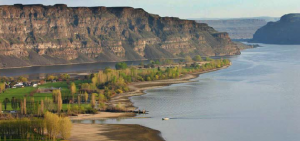Alaska joins the PNGA
The Pacific Northwest Golf Association proudly welcomes the Alaska Golf Association (AGA)...
 When Arnold Palmer had his hand in building Crescent Bar Golf Resort some 50 years ago, it is certain he never imagined drama and controversy in its future. No one can peg Arnie for being a poor visionary, but drama and controversy is what Crescent Bar got.
When Arnold Palmer had his hand in building Crescent Bar Golf Resort some 50 years ago, it is certain he never imagined drama and controversy in its future. No one can peg Arnie for being a poor visionary, but drama and controversy is what Crescent Bar got.
On April 26th, 2010, Crescent Bar’s fate was nearly assured when the 50-year lease was denied renewal by its holders, Grant County PUD in conjunction with the Port of Quincy. PUD had other intentions for the public-use island in their plans to redevelop it. Current golf-supporting leaseholders, including 65 full-time residents and nearly 400 seasonal, would be forced to vacate the 160-acre island by the 2012 expiration. Five months later, the 9-hole golf course was removed from future plans as well. However, with the help of a tireless farmer, some 600 signatures from local golfers, and a few golf-friendly Grant County PUD commissioners, Crescent Bar Golf Course now has its second wind.
Grant County PUD had a legitimate reason for such dramatic decisions, or so it seemed at first. Commissioners nixed the 3,034-yard golf course after a consulting firm determined that a redeveloped island with the course would lose an estimated $152,300 annually. The general consensus among commissioners was that the golf course was too expensive to operate, would not make any money, and limits broader public access. Instead, preliminary plans were to turn the golf course into additional camping areas, walking trails, and increased park acreage, just to name a few.
When the costs associated with the absence of a golf course were revisited in October 2010, commissioners reversed their decision to eliminate the course. According to Commissioner Terry Brewer, the “no golf” option could cost some $10 million more to build than the $15 million to $19 million “with golf” option. Additional figures provided by Crescent Bar, Inc., operator of the golf course, determined that the course saw an average of 10,000 rounds annually and modest profit gains, far better than previous estimations.
However, as Commissioner Bob Bernd explains, the decision had little to do with the round totals and operational success.“ It was mostly the initial savings of several million, that helped sway the commissioners.” Not to mention, PUD officials were skeptical of the support Crescent Bar had received from its local patrons. “When you look at the population as a whole, I don’t know what percentage are golfers, but would suspect it would be less than those who want to picnic,” says opposing Commissioner Greg Hansen. Local farmer and golf course proponent Jim Hoersch felt otherwise, as did 600 other area golfers.
While the battle for island residency wages on into 2011, Crescent Bar Golf Course is back in business for the foreseeable future, but there are no guarantees. Crescent Bar will need to see if its 9-hole golf course can stand up to the test of a down economy and an evident shrinkage of the golfing public as a whole.
It is hard to say whether the absence of golfers—if and when the residents are removed from the island—will have an effect on rounds and golf course success. In a “golf economy” that saw far more course closures than course openings in 2010, saving a golf course from legitimate demise is a win for golfers. Arnold Palmer would most certainly approve.
By Brad Faller
Special to Inside Golf Newspaper